Getting Beyond the Length of the Leash
Published on March 6th, 2017
Incremental steps of empowerment builds the kind of confidence and skill that can lead a young child to successfully tackle all sorts of adventurous escapades as they grow older. However, as our culture increases its oversight, children are having a harder time getting beyond the length of the leash.
The following is an excerpt of a letter by an unnamed friend of the adventurer Guy Hamilton Scull, printed in Guy Hamilton Scull: Soldier, Writer, Explorer and War Correspondent, by Henry Jay Case. Impossible to imagine this occurring today:
 In our fifteenth year, Guy was given a twenty-foot centreboard catboat and I a twenty-one foot jib and mainsail boat. His was the more comfortable and mine the faster and more seaworthy. Neither boat had any inside fittings except transoms with cushions on which two or three boys could sleep.
In our fifteenth year, Guy was given a twenty-foot centreboard catboat and I a twenty-one foot jib and mainsail boat. His was the more comfortable and mine the faster and more seaworthy. Neither boat had any inside fittings except transoms with cushions on which two or three boys could sleep.
Our cooking utensils were old-fashioned Florence oil stoves, a sauce pan and a frying pan. Our food was Hecker’s oatmeal, eggs, potatoes, onions, pilot biscuit, bacon and canned goods. Really, the only decent meals we had were at the houses of friends. Of course we didn’t appreciate this, and thought our own halfcooked dishes delightful.
The cabins were so small that it wasn’t possible to sit up quite straight and of course everything got damp and mouldy and there was a permanent smell of a mixture of mustiness and kerosene. On the other hand, there was the morning plunge as soon as we waked, the complete freedom of the life, and the excitement of relying on our own skill and judgment for the first time.
Our first cruise was around Cape Ann to York Harbor and back. The run from York to Cape Ann is about 30 miles, and across Ipswich Bay the straight course carries you seven miles off shore. On the afternoon of our return trip, while we were still several miles from Cape Ann, we ran into a very black looking squall.
I remember looking anxiously at Guy’s boat, which was nearly a mile to leeward, and wondering whether they would be all right. Fortunately the wind wasn’t very great and was quickly followed by a calm and some light airs. By this time it was dark and we hadn’t seen Guy since the squall shut down.
We anchored in Gloucester about 10 o’clock, and when we waked about five the next morning, there was Lester Monks, who was Guy’s crew, grinning down the hatch at us. It seemed that they had been hit harder than we had and were blown off their course and out to sea while reefing. Then the wind dropped and they had had a long, slow beat all night, not reaching Gloucester till daylight, found our moorings and tied on to our stern.
Guy told us that while sitting steering in the dark, he kept noticing a red light that seemed a long way off. All of a sudden he was stopped by a coasting schooner looming up out of the darkness and passing very close. The light he had been watching was her port sailing light. This was his first cruise, and he was so green that he did not realize the danger he was in until it was past.
Gerard Koeppel, who submitted this excerpt, reflects on how times have changed:
“Parents who let 14-year-olds have adventures like this today would be arrested or deported.
“Scull and friends’ short voyage of youthful discovery was in 1890. He went on to Harvard, leaving his graduating class in May 1898 to join Teddy Roosevelt’s Rough Riders. Thereafter he led a packed lifetime of purposeful and productive adventure, including the purchase and eventual hurricane-wrecking of the 1886 America’s Cup defender Mayflower.
“Scull’s friends lovingly called him The Skipper. He would not have been had his parents, or his government, gotten in the way.”


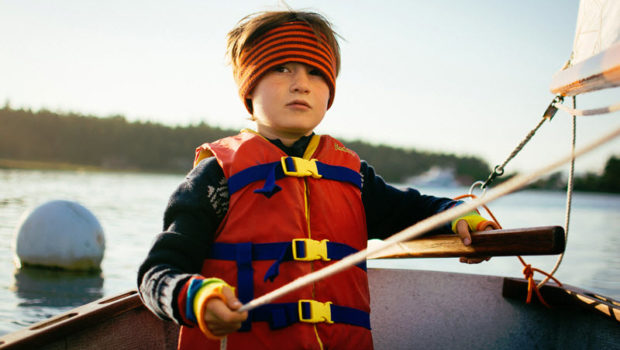


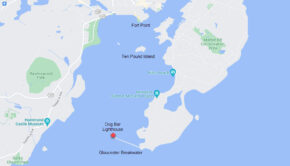
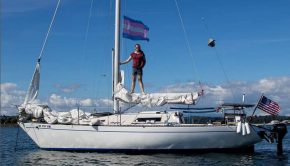
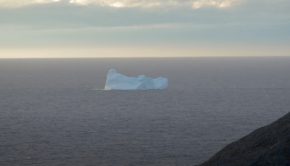
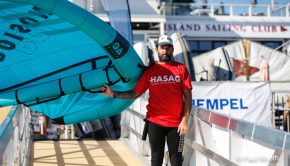
 We’ll keep your information safe.
We’ll keep your information safe.